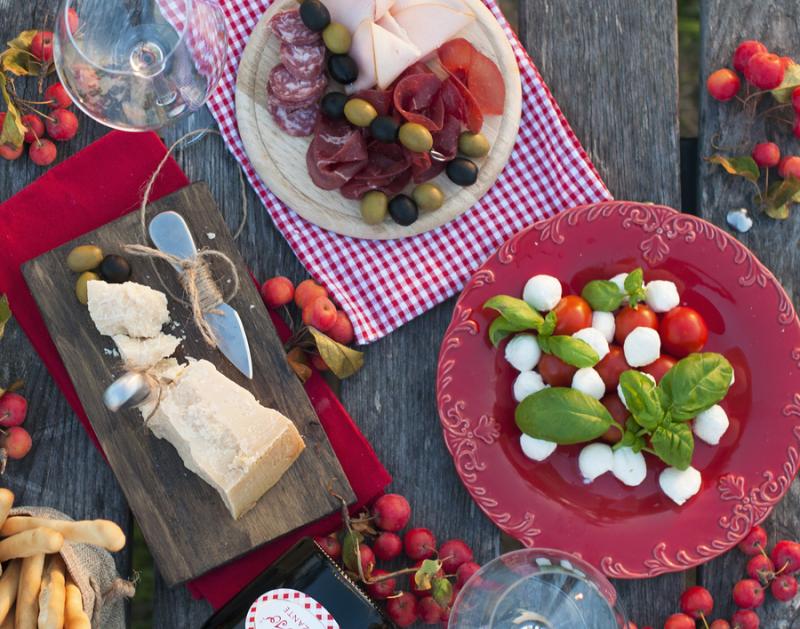John Bensalhia serves up some of the best Italian starters and soups to satisfy all tastes...
Italian meals are known worldwide for their high quality ingredients and their inventiveness. While the main course and the pudding usually take centre stage, let's not forget what kicks off the traditional Italian meal – the starter. All kinds of Antipasti and soups have been created over the years, and remain extremely popular today. So let's delve into the cookbooks and sample some of the finest examples...
Caprese Salad
When you order a starter, the last thing you want is something that will take away your appetite for the main meal. Something simple, light but tasty will do the trick, and a great example of this is salad.
One of the most celebrated salad starters in Italy is the Caprese Salad. It's also one of the most patriotic, using its central ingredient colours to represent the colours of the Italian flag. Red, white and green come together on the plate in the form of tomatoes, mozzarella cheese and basil. Add in a splash of olive oil and a dash of salt, and you have a healthy, tasty antipasto favourite.
Bresaola
Choice cuts of meat are popular antipasti. I've included two in this listing, one of which is Bresaola, an aged, salted beef that has its roots in the Lombardy region of the Alps valley, Valtellina.
The meat is known for its distinctive taste and aroma, which is achieved by defatting and seasoning a cut of beef with selected salts and spices such as cinnamon or juniper berries. The ageing process usually takes up to three months. While it can be eaten alone as a starter, Bresaola is a good accompaniment to a salad dish. It's traditionally cut up into very thin slices when served, and can have its flavour augmented by an extra bit of olive oil, balsamic vinegar or lemon juice.
Unique in flavour and taste, Bresaola's preparation process adds that extra kick in a tasty meat antipasto.
Salami
If you're a fan of meat-based starters, then Salami is another excellent choice.
In keeping with the Italian style of curing meat, Salami is one of the most popular. Having been salted and spiced, the sausagemeat can undergo the drying process for a lengthy spell – back in the day, peasants would favour Salami on account of its long-lasting properties. Since it could last for up to 40 days at room temperature, Salami was a popular choice of food for peasants, who could make it last for a long while.
While pork is the traditional meat for Salami, other meats used include beef, poultry and goose. Herbs, spices, peppers and garlic are added to the mix to give its notable spicy signature taste. Like Bresaola, Salami is the perfect companion to a good salad or as a flavour-filled Bruschetta topping.
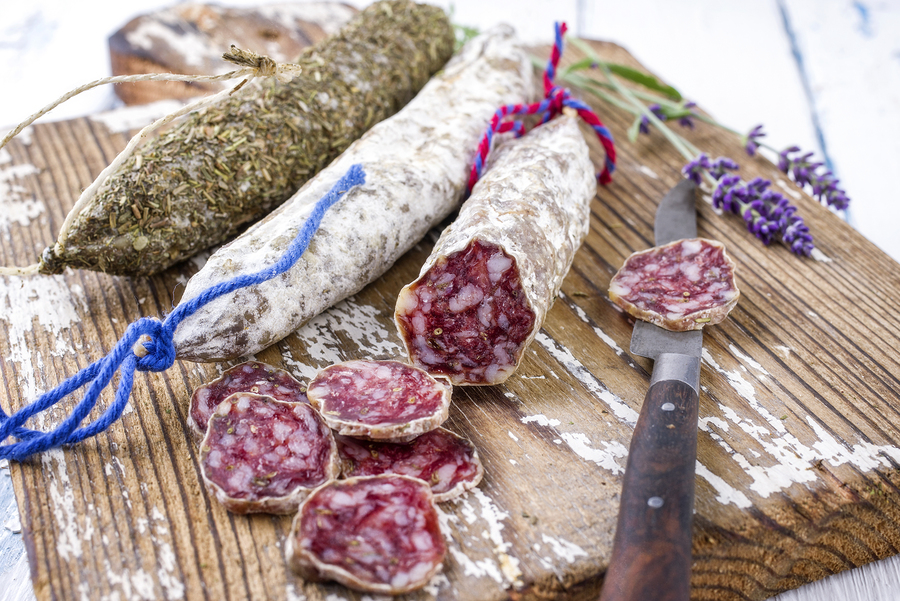
Bagna càuda
It's not fondue, although this Piedmont-based dish runs along the same lines.
The way it works is to create a hot mixture of garlic, chopped anchovies, salt and sometimes truffles. The heat of the sauce is maintained at the dining table by using a burner or candle. You then dip either raw or cooked vegetables into the sauce, such as carrots, artichokes, peppers and celery. A common Piedmont choice of vegetable is the cardoon, which is a type of thistle (but don't worry, it's edible – no sharp surprises here!). Incidentally, it's been a part of Piedmontese cuisine going all the way back to the 16th century.
Because it's a warming starter, Bagna càuda is best enjoyed in the colder months, and makes for a healthy way to kick off a Christmas or New Year celebratory meal.
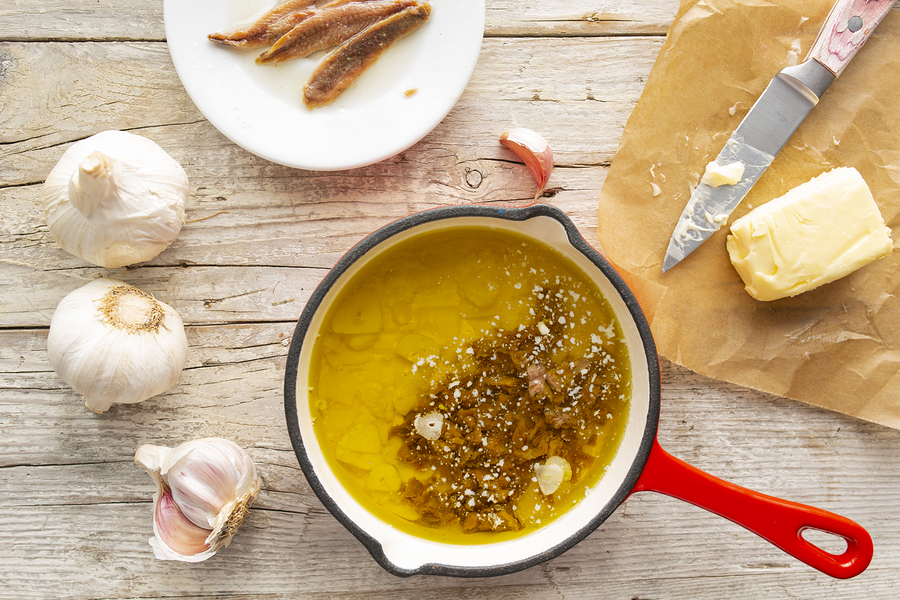
Bruschetta
Sometimes, a tasty meal or snack can come about as a means of saving food that's past its best.
A case in point is the Bruschetta, which is said to have been a way of making the best of stale bread. Not bad going for one of the tastiest antipasti around.
Like many great starters, the key to Bruschetta is its simplicity. Grilled bread with a combination of garlic and olive oil/salt topping, in a tradition that is said to date all the way back to the era of ancient Rome, when bread would be used by olive growers as a source of sampling newly pressed olive oil.
Common toppings include cheese, cured meats, and vegetables such as tomatoes. Italy is well known for its delicious, home-baked bread, and the Bruschetta is one of the finest examples that you can enjoy as a starter.
Garmugia
In a sense, Garmugia soup is a meal in itself, given that it's a wonderful pot pourri of ingredients.
Having been introduced in 17thcentury Lucca, it's a soup that's highly flexible on account of its eclectic ingredients. While common elements include the stock of vegetables or chicken, it's up to you what vegetables and meats you put in. Onions, carrots, asparagus and peas are common favourites for vegetables, while pancetta, beef or sausages have also been part of the recipe – however, the meats are not in great quantity, being there to add a little bit of flavour to the soup.
Like other soups, Garmugia goes well with croutons, toast and also a sprinkling of Parmesan cheese. A strong soup that lines up a good mix of flavours, it's a great introduction to a traditional Italian meal.
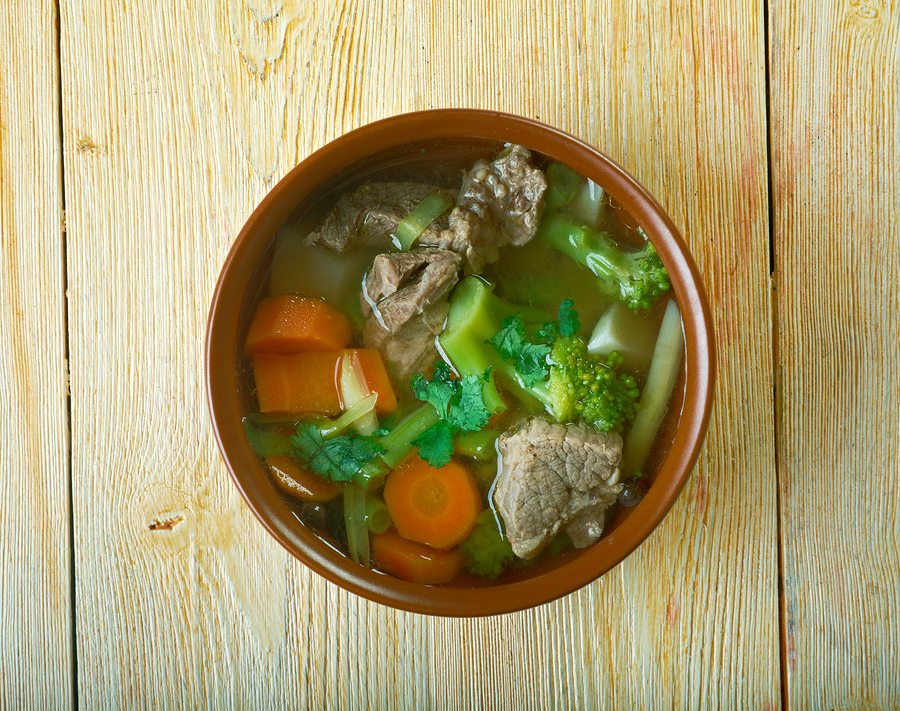
Maccu
A traditional Sicilian soup, Maccu can also be consumed as a food in its own right. It's a particular favourite to be tasted every St Joseph's Day. This goes back to the era of the Middle Ages, in which St Joseph prevented famine spreading throughout Sicily. With drought threatening crops, the people of Sicily prayed for the miracle of rain, which fortunately poured down. The crop that halted any chance of famine was one of the primary ingredients of Maccu – the fava bean.
Crushed and dried, the fava bean is used to make Maccu along with fennel, salt, pepper and olive oil. Solid Maccu can also be served as a starter. Once it becomes solid, the Maccu is cut, covered with flour, fried in olive oil and served.
Stracciatella
With Easter approaching, it's appropriate to include a soup that has been a starter for this season's traditional meal.
Since the name of the soup originates from the Italian verb, shred (stracciare), this ties in with its composition. A special mixture featuring eggs is prepared and then shredded into small pieces. As well as eggs, the recipe includes salt, pepper, zest of lemon, nutmeg and grated Parmesan cheese. The shreds are then added into a meat soup and blended in.
It's another soup steeped in history, a variant of which can be found in Martino da Como's Art Of Cooking, which was available in the 15th century. Back then, da Como called it Zanzarelli, and its influence is still enjoyed today, especially in the Roman region of Lazio.
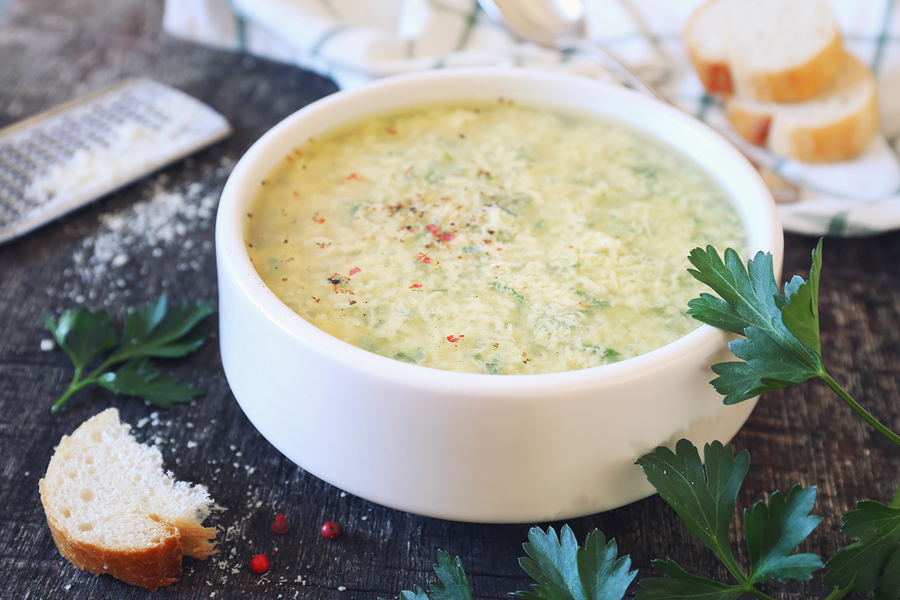
Ribollita
This is another soup that makes the best of leftover ingredients. It's also another dish that was enjoyed by peasants on account of two factors. One – its simplicity. The creation of this soup brings together two key simple ingredients: bread and vegetables. The other factor is that peasants would merely boil the soup that had been made the previous day – again making food last longer than beyond instant consumption.
It's an easy and also cheap soup to make. Along with bread, you can include affordable vegetables like cabbage, carrots, cannellini beans, onions, potatoes, and more. The end result is both enjoyable to eat and a soup that can be enjoyed as a filling snack out of mealtimes.
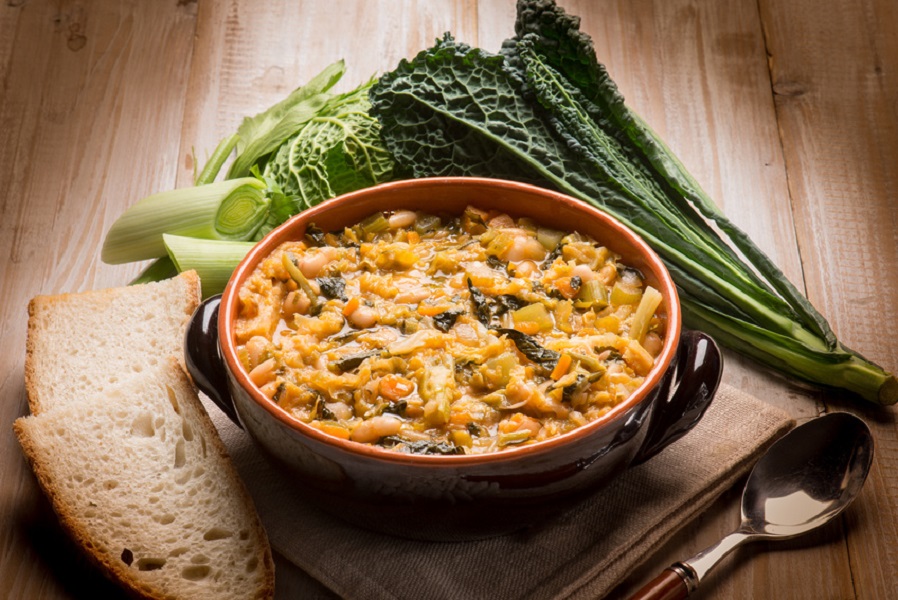
Minestrone
Life is a Minestrone, as a wise 1970s band once claimed. And in the case of this big player of the soup world, its life has certainly been a long one.
It's said that the origins of Minestrone soup date all the way back to the days of the Roman kingdom. While not strictly soup, the pattern of the recipe can be seen in which a porridge-type mixture (Pulte) of flour and salt water would have been cooked up along with available vegetables such as broad beans, carrots, onions and lentils. As time and trade progressed, the recipe for this would change with the addition of new ingredients, most notably, meat. Over time, the recipe would become more sophisticated with new elements (wine became one of the more elaborate aspects).
Because there has never been a formal recipe to follow, it's up to the individual as to what makes a good Minestrone soup. Vegetables remain a key ingredient, along with meat stock – take your pick as to which ones you want! Whatever your choice, it's one of the most enduring soups to be enjoyed in Italy, and is likely to continue that way well into the future.
